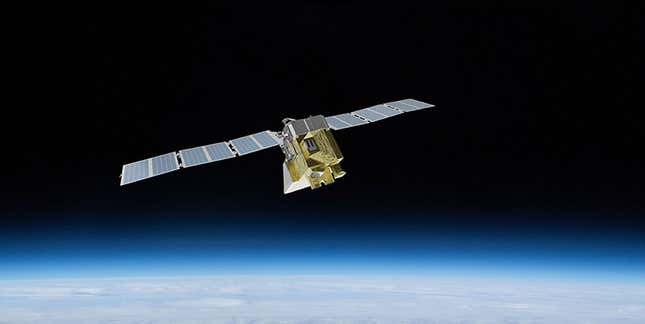
A new satellite may soon usher in a more modern era of transparency for companies with high fossil fuels footprints. MethaneSAT, which was set to launch on Monday aboard the SpaceX Falcon 9 rocket, will track methane emissions from some of the largest oil and gas polluters in the world, according to the Environmental Defense Fund (EDF), a nonprofit advocacy group.
Methane is a key component in natural gas. The International Energy Agency has identified it as the second largest contributor to climate change.
Once launched, MethaneSAT will circle the Earth 15 times a day. Its main job will be to track and identify potent greenhouse gas emissions.
The satellite will measure changes in natural gas concentrations with high resolution over wide areas. It will also provide a view of smaller areas that other satellites may not be able to identify. Notably, it will not be the only methane-detecting satellite in orbit, but will aim to fill a significant data gap.
EDF President Fred Krupp said that cutting methane pollution from fossil fuel operations, including agriculture and other sectors, is the “single fastest way to slow the rate of warming as we continue to decarbonize our energy systems.”
“To do that requires comprehensive data on this pollution on a global scale,” Krupp said in a statement. “MethaneSAT will show us the full scope of the opportunity by tracking emissions to their source.”
EDF said the organization could begin to share some of the data collected from MethaneSAT as early as this year, with more substantive findings by the end of 2025.
Once ready, the interactive emission data will be publicly available on www.MethaneSAT.org and on Google Earth Engine.
Among some of the key goals of the satellite’s data collection is to help companies and countries meet their methane targets, or to adjust them. During the United Nations Climate Conference, also known as COP28, more than 50 oil and gas companies that contribute to an estimated 40% of global oil production pledged to reduce their emission contributions to nearly zero by 2030.
The satellite, a brainchild of EDF and the New Zealand Space Agency, has an estimated price tag of $88 million. Talk of the satellite first emerged six years ago when Krupp announced MethaneSAT as part of the TED Audacious Project, one of the project’s contributors.
The satellite has backing from other prominent figures, including Amazon founder Jeff Bezos, who contributed $100 million via the Bezos Earth Fund, and Google.